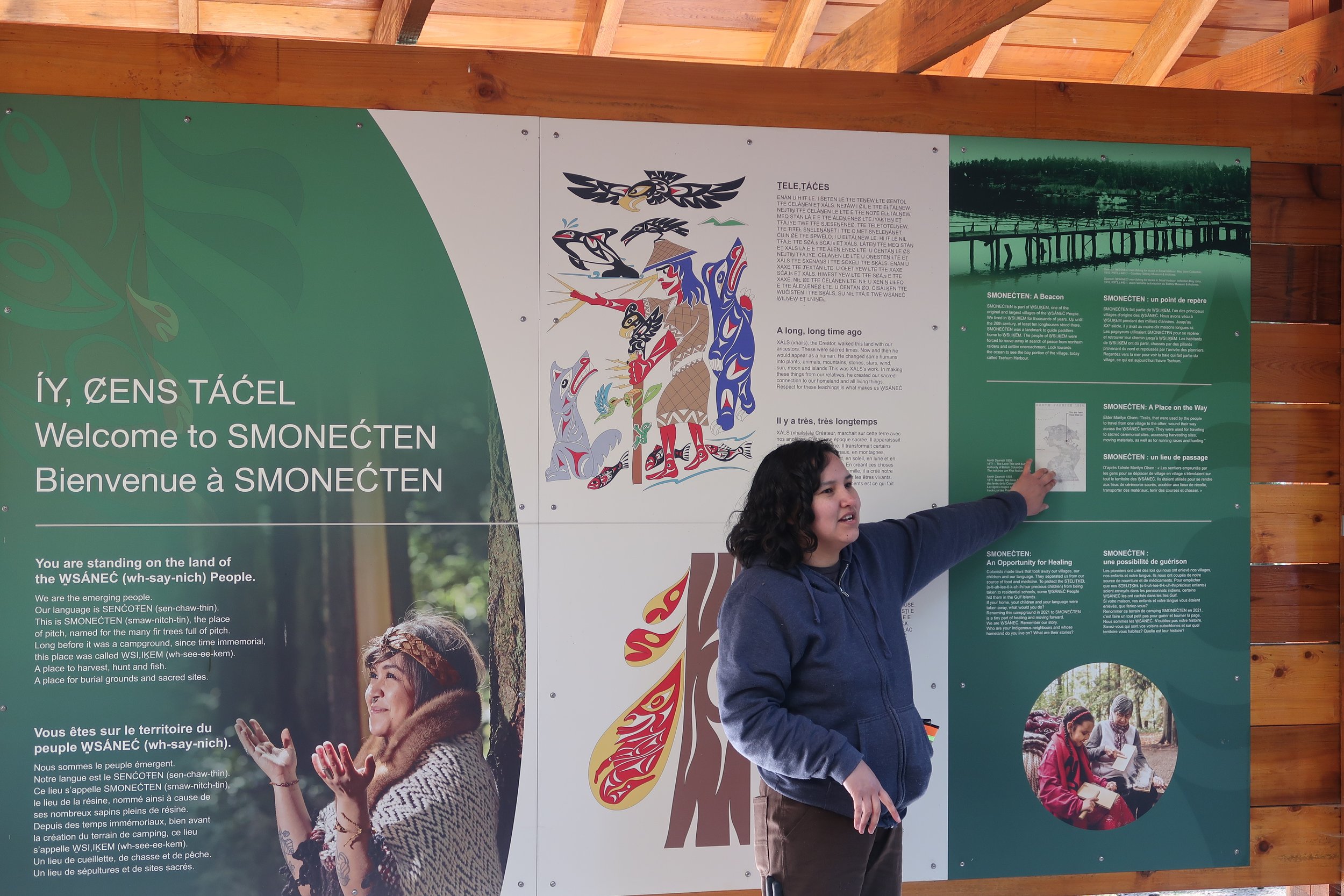SX̱ÁNEȽ Moon at SMONEĆTEN
April 28 2023
HAT staff came together on April 12, 2023 with Parks Canada to host an early celebration of the arrival of the SX̱ÁNEȽ Moon at SMONEĆTEN (part of the Gulf Islands National Park Reserve). The SX̱ÁNEȽ moon translates to “the bullhead moon.” Bullheads are a type of sculpin, a fish that spends most of its life deep in the water below the surface. However, for W̱SÁNEĆ people, this time of year is known specially for being when the bullheads come up from the depths and appear on the shore. In W̱SÁNEĆ culture this is the time of year when people would start to be out on the water more, and elders (specifically the elder women) would know where to go along the shorelines in order to collect the best bullheads, which are considered to be a culinary delicacy. The SX̱ÁNEȽ moon also marks the time of the year when the swallows return, the grouse hatch, and the halibut begin to spawn.
SMONEĆTEN is a former W̱SÁNEĆ village site and is home to many important cultural and historic artifacts. In 1948 it became known as McDonald Provincial Park, before being transferred Parks Canada as a part of the Gulf Islands National Park Reserve. In 2021 Parks Canada collaborated with the W̱SÁNEĆ Leadership Council to rename the park with a SENĆOŦEN name: SMONEĆTEN.
According to W̱SÁNEĆ elder Eric Pelkey “SMONEĆTEN means place of pitch, where our people used to gather pitch when it ran from the Douglas firs. Pitch was a prized commodity for its many uses, including fire starting, patching open wounds and sealing the canoes of our people.” (https://parks.canada.ca/pn-np/bc/gulf/culture/denominationducamping-campgroundnaming)
Our collaborative event on April 12th saw members of different communities come together to help support the stewardship of this important place. We were joined by Parks Canada staff, students from UVic’s School of Indigenous Governance, residents from the Roberts Bay community, as well as individuals from HAT’s extended volunteer network. To begin our day, we shared some warm drinks and snacks generously provided to our group by Heidi Kiiwetinepinesiik and Jacqueline Ohayon on behalf of the Indigenous Governance students. Tiffany Joseph then led our group through proper W̱SÁNEĆ protocols as we introduced ourselves to each other and asked the land for permission before entering to do our work. Tiffany spoke of the importance of getting to know the ebbs and flows of the seasons, and the patterns and changes that occur all around us; emphasizing the importance of having a relationship with a place that involves living with the natural landscape, rather than imposing oneself upon it. In keeping with this philosophy, our group began work on removing a large patch of English ivy that had formed a dense carpet over the forest floor. As we carefully removed the ivy, we could immediately see newly uncovered Oregon Grape, June Plum, Sword Ferns, and Shooting Stars that now had space to grow. While the work of restoration is about long-term relationship building and stewardship, these immediate rewards can act as good reminders of the kinds of things that we are working towards in doing this work.
For more information on our monthly W̱SÁNEĆ new moon events please contact Max at max@hat.bc.ca or sign up for The Fern newsletter!









